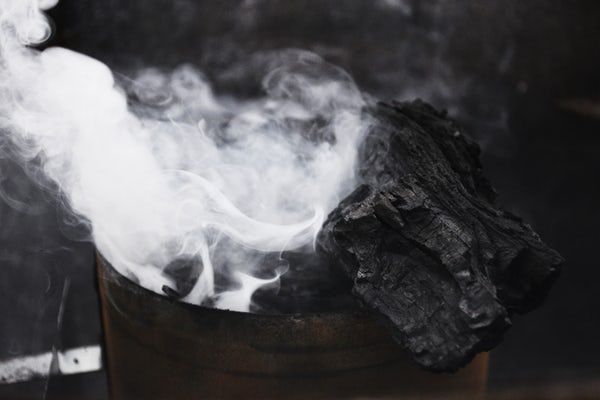Treatment at Home
Remove the person with smoke inhalation from the scene to a location with clean air.
Make sure that you are not putting yourself in danger before you attempt to pull someone from a smoke-filled environment. If you would be taking a serious risk to help the person, wait for trained professionals to arrive at the scene.
If necessary, CPR should be initiated by trained bystanders until emergency medical help arrives.
Medical Treatment
A number of treatments may be given for smoke inhalation.
- Oxygen
- Oxygen is the mainstay of treatment.
- Oxygen may be applied with a nose tube, mask, or through a tube down the throat.
- If the patient has signs and symptoms of upper airway problems (hoarseness), they will most likely be intubated. The doctor places a tube down the throat to keep the airway from closing due to swelling.
- If the patient has respiratory distress or mental status changes, they may also be intubated to enable the staff to help with breathing, to suction mucus, and keep the patient from choking on secretions.
- Bronchoscopy
- Bronchoscopy is a procedure performed through a small scope to directly look at the degree of damage done to the airways and to allow for suctioning of secretions and debris.
- Usually, bronchoscopy is done through an endotracheal tube after the patient receives adequate sedation and painrelievers.
- Bronchoscopy may be necessary if the patient has an increased respiratory failure, fails to demonstrate clinical improvement, or a segment of the lung remains collapsed.
- Hyperbaric oxygenation (HBO)
- If the patient has carbon monoxide poisoning, hyperbaric oxygenation may be considered.
- Hyperbaric oxygenation is a treatment in which the patient is given oxygen in a compression chamber.
- Some studies have demonstrated that hyperbaric oxygenation causes a reduction in symptoms of the nervous system, and if the patient has carbon monoxide poisoning, it may make recovery quicker.
- The indications for and availability of this treatment vary depending on the institution and the region in which the patient is hospitalized.
The number one cause of death related to fires is smoke inhalation. An estimated 50%-80% of fire deaths are the result of smoke inhalation injuries rather than burns.
Overview
Smoke inhalation occurs when you breathe in the products of combustion during a fire. Combustion results from the rapid breakdown of a substance by heat (more commonly called burning). Smoke is a mixture of heated particles and gases. It is impossible to predict the exact composition of smoke produced by a fire. The products being burned, the temperature of the fire, and the amount of oxygen available to the fire all make a difference in the type of smoke produced.
Causes for Smoke Inhalation
Smoke inhalation damages the body by simple asphyxiation (lack of oxygen), chemical irritation, chemical asphyxiation, or a combination of these.
- Simple asphyxiants
- Combustion can simply use up the oxygen near the fire and lead to death when there is no oxygen for a person to breathe.
- The smoke itself can contain products that do not cause direct harm to a person, but they take up the space that is needed for oxygen. Carbon dioxide acts in this way.
- Irritant compounds
- Combustion can result in the formation of chemicals that cause direct injury when they contact the skin and mucous membranes.
- These substances disrupt the normal lining of the respiratory tract. This disruption can potentially cause swelling, airwaycollapse, and respiratory distress.
- Examples of chemical irritants found in smoke include sulfur dioxide, ammonia, hydrogen chloride, and chlorine.
- Chemical asphyxiants
- A fire can produce compounds that do damage by interfering with the body’s oxygen use at a cellular level.
- Carbon monoxide, hydrogen cyanide, and hydrogen sulfide are all examples of chemicals produced in fires that interfere with the use of oxygen by the cell during the production of energy.
- If either the delivery of oxygen or the use of oxygen is inhibited, cells will die.
- Carbon monoxide poisoning has been found to be the leading cause of death in smoke inhalation.
